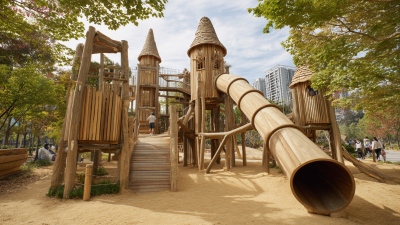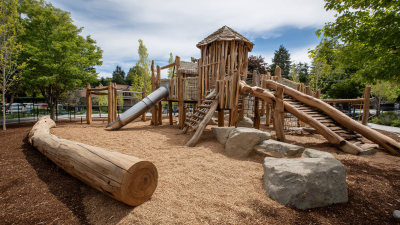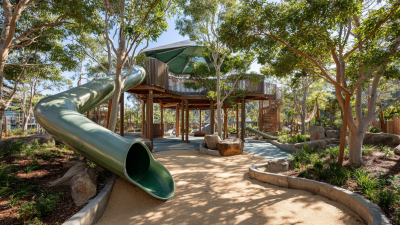 +86-13901441113
+86-13901441113




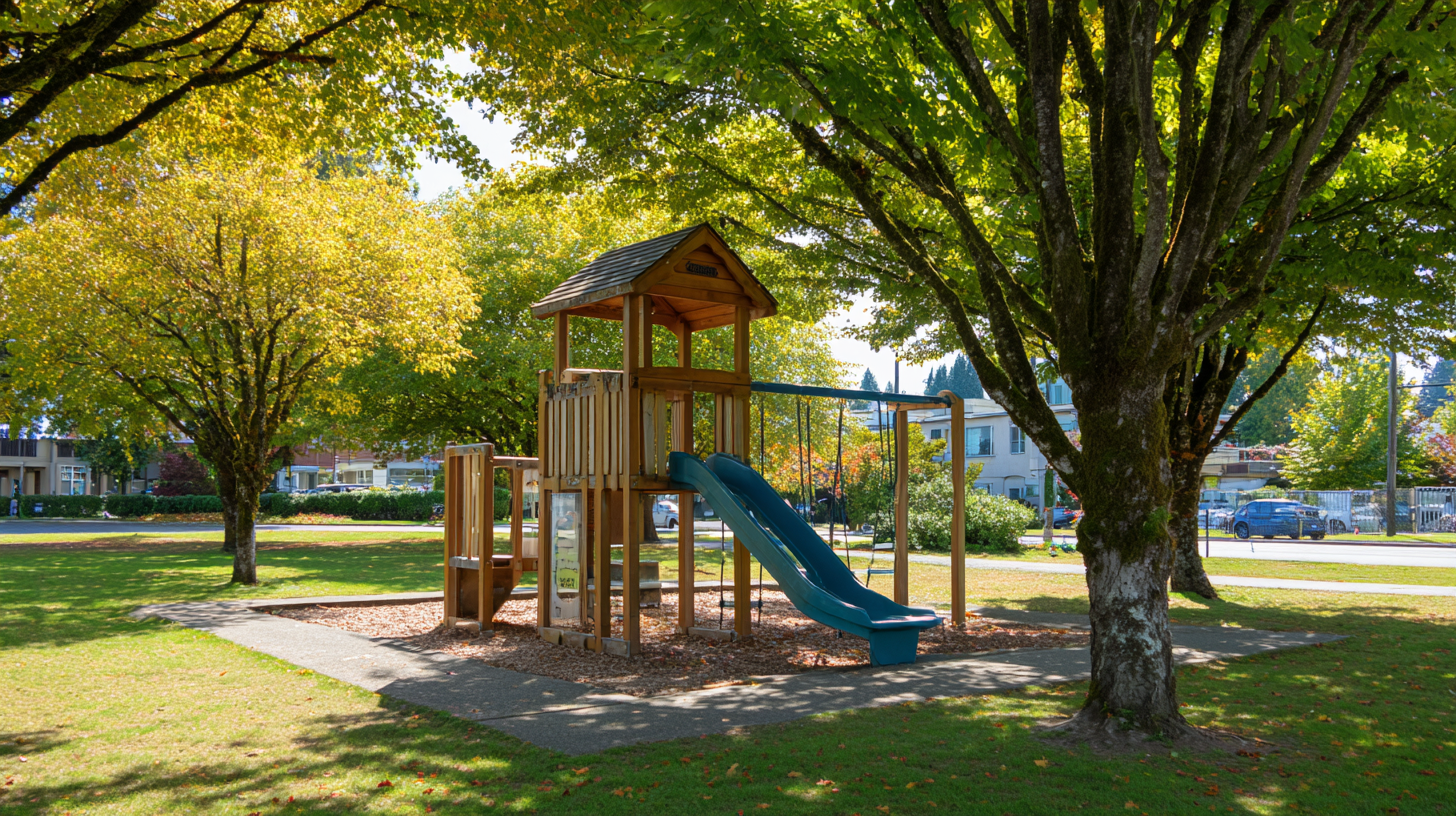 The presence of a "Playground In The Park" can significantly enhance community engagement,
fostering social connections and promoting physical activity among diverse populations. According to the National Recreation and Park Association (NRPA),
parks with well-designed playgrounds can increase community participation by up to 80%,
creating a space where families can gather and interact. Furthermore, research from the Centers for Disease Control and Prevention (CDC)
indicates that accessible recreational areas contribute to a 25% increase in children's physical activity levels,
addressing concerns related to childhood obesity and sedentary lifestyles. By investing in playgrounds in public parks, communities can cultivate an
inclusive environment that not only encourages play and exploration but also strengthens neighborhood ties, ultimately enriching the quality of life for residents.
As we explore the myriad benefits of these vital spaces, it becomes clear that a playground in the park is more than just a play area—it’s a
catalyst for community connection and well-being.
The presence of a "Playground In The Park" can significantly enhance community engagement,
fostering social connections and promoting physical activity among diverse populations. According to the National Recreation and Park Association (NRPA),
parks with well-designed playgrounds can increase community participation by up to 80%,
creating a space where families can gather and interact. Furthermore, research from the Centers for Disease Control and Prevention (CDC)
indicates that accessible recreational areas contribute to a 25% increase in children's physical activity levels,
addressing concerns related to childhood obesity and sedentary lifestyles. By investing in playgrounds in public parks, communities can cultivate an
inclusive environment that not only encourages play and exploration but also strengthens neighborhood ties, ultimately enriching the quality of life for residents.
As we explore the myriad benefits of these vital spaces, it becomes clear that a playground in the park is more than just a play area—it’s a
catalyst for community connection and well-being.
Playgrounds in parks serve as vibrant hubs for community interaction and bonding, offering spaces where individuals of all ages can come together in a shared environment. These areas promote not only physical activity but also social connections. As children engage in play, parents often find themselves conversing with one another, forming friendships that extend beyond the playground. In this way, playgrounds act as a catalyst for community networking, fostering a sense of belonging among residents.
To enhance the community engagement experience around playgrounds, consider organizing regular events such as family picnics or game days. These gatherings can encourage families to meet new neighbors and strengthen existing relationships. Additionally, creating volunteer opportunities for park maintenance or playground improvements can instill a sense of ownership and pride among community members.
Lastly, ensure the playground has features that appeal to a diverse range of users, from toddlers to older adults. Incorporating seating areas, fitness stations, and inclusive play structures will make the space welcoming and functional for everyone, thus maximizing opportunities for interaction and bonding. By cultivating a playful and inviting environment, communities can harness the full potential of their parks as places for connection and collaboration.

Inclusive design in playgrounds is essential for fostering diverse participation and ensuring that everyone feels welcome. One effective approach is to implement multi-sensory play features that engage children of all abilities. Elements like tactile panels, musical instruments, and varied textural surfaces allow children with sensory processing disorders and different physical capabilities to explore and interact in meaningful ways. By providing a range of experiences, designers can help children develop social skills and confidence.
Another crucial element is the incorporation of universally accessible equipment. Swings, slides, and climbing structures should accommodate various physical abilities, such as wheelchair users and children with mobility challenges. Providing options like transfer platforms or adjustable features ensures that no child is left out of the fun. Moreover, creating clear and inviting pathways around the playground encourages all families to participate in active play, making the space feel open and accessible.
Finally, community input should be central to any inclusive playground design. Engaging with families, educators, and local advocacy groups helps identify specific needs and preferences, ensuring the resulting playground is truly reflective of the community it serves. This collaborative approach not only enhances the design process but also cultivates a sense of ownership among community members, fostering greater engagement and a stronger sense of belonging.
This bar chart illustrates the percentage of engagement among different demographic groups in the community playground. Children show the highest engagement, followed by parents and teens, with elderly and disabled individuals showing relatively lower engagement levels. This data highlights the importance of inclusive design in attracting diverse participants to playgrounds, fostering community engagement.
Playgrounds in parks are not just havens for children; they serve as vital components of local health and well-being initiatives. According to the National Recreation and Park Association (NRPA), access to quality playgrounds can significantly improve community health outcomes by encouraging physical activity among children and families. Research indicates that children who engage in regular play are less likely to develop obesity and related chronic diseases. In fact, the Centers for Disease Control and Prevention (CDC) report that regular physical activity can help reduce the risk of heart disease, diabetes, and certain cancers.
Furthermore, the influence of playgrounds extends beyond mere physical health; they foster social connections that are crucial for mental well-being. A study by the American Journal of Preventive Medicine found that neighborhoods with accessible parks and playgrounds report higher levels of community engagement and social cohesion. Playgrounds serve as gathering points where families can bond, share experiences, and strengthen their sense of belonging, which is vital for combating feelings of isolation. As communities prioritize health initiatives, investing in playgrounds offers a multifaceted approach to enhancing the overall well-being of residents.
Playground facilities in community parks are invaluable for fostering engagement among residents. Innovative programs, such as family fitness days and weekend art workshops, can attract diverse groups, encouraging interaction among neighbors. According to a 2019 report from the National Recreation and Park Association, communities that actively engage in park programming see a 30% increase in resident participation compared to those without organized events. This statistic highlights the importance of turning playgrounds into vibrant community hubs.
Furthermore, seasonal events like outdoor movie nights or holiday festivals can transform playgrounds into lively social centers. A study conducted by the American Planning Association found that communities with regular outdoor events report a 25% higher sense of belonging among residents. By utilizing park playgrounds for such activities, we can strengthen community ties and enhance social cohesion. Implementing these programs not only supports physical health and well-being but also fosters a sense of community pride and inclusion, making parks an essential part of urban life.
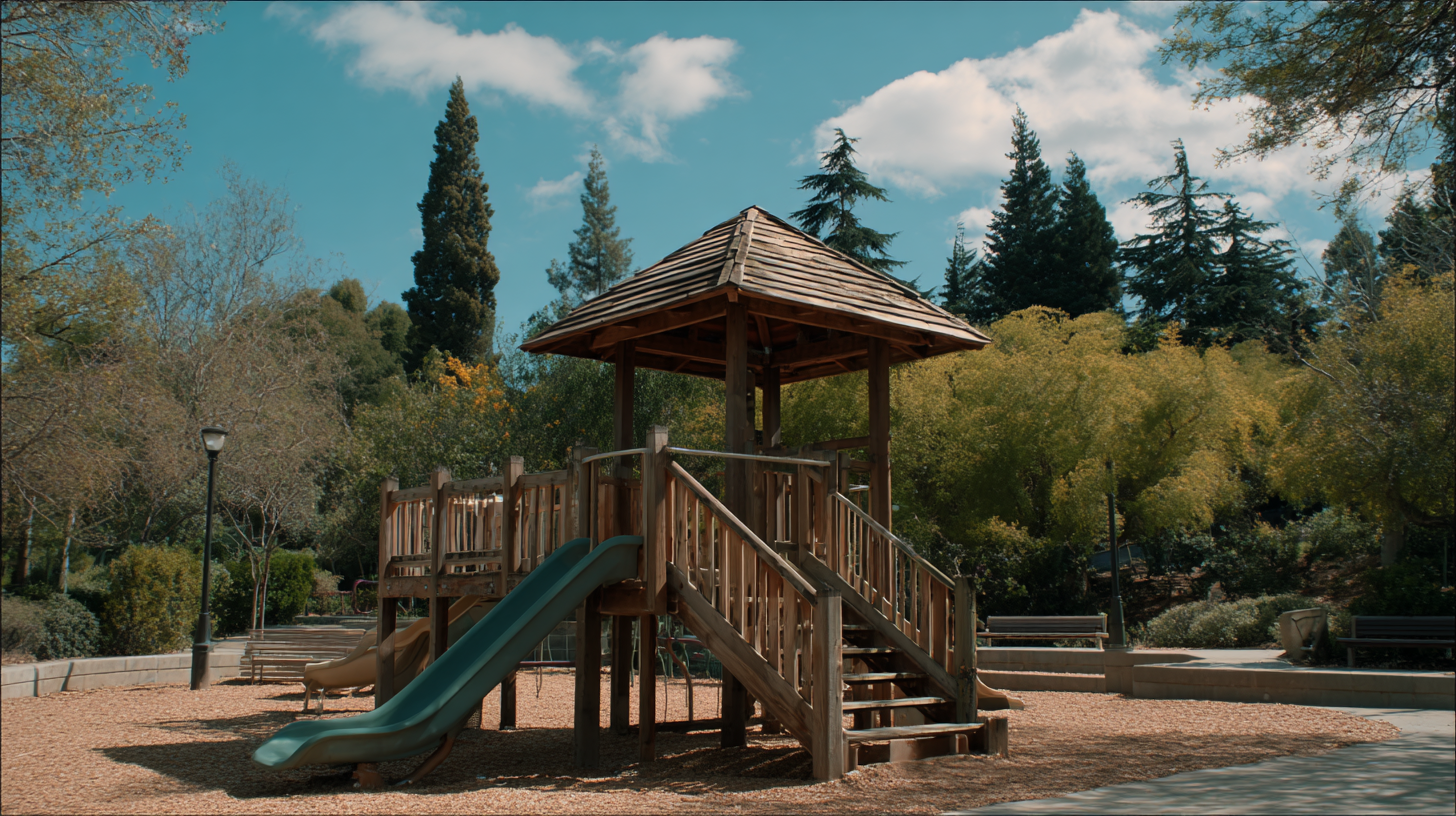
Playground initiatives in community parks serve as vital tools for strengthening community ties. By providing a space for families and children to gather, these playgrounds foster social interaction and create opportunities for neighbors to connect. Regular users of the park often build friendships, sharing experiences as their children play. This social fabric is essential for a cohesive community, as it encourages collaboration and supports local engagement.
Measuring the success of these playground initiatives goes beyond merely counting foot traffic. Surveys can reveal insights into user satisfaction, and community feedback can help assess the playground's impact on social dynamics. Events such as community clean-ups or holiday gatherings at the playground can also be indicators of engagement and participation. Ultimately, a well-utilized playground becomes a hub of activity, where community members come together, share stories, and participate in shared experiences that bolster their connections and foster a sense of belonging.
